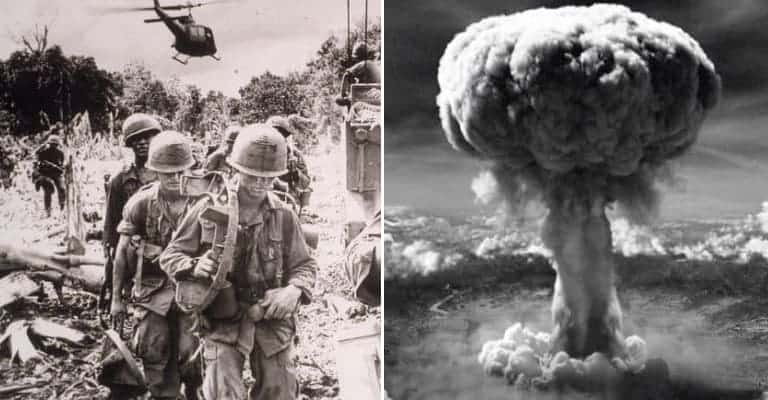1968 was a bad year for the American war effort in Vietnam, and for general William Westmoreland, the overall US military commander in that conflict since 1964. His repeated predictions that a corner was about to get turned, and that the war was on schedule for a successful conclusion, had been wearing thin for some time. When the communist forces launched the Tet Offensive in early 1968 – a massive surprise attack against cities and towns throughout South Vietnam – Westmoreland’s prognostications came to be seen by many as overly optimistic, or even ludicrous.
Adding to the pressure was a separate North Vietnamese offensive that besieged a remote US Marine garrison at Khe Sanh, near the demilitarized zone between North and South Vietnam. 14 years earlier, the Vietnamese had successfully besieged and forced the surrender of a remote French garrison at Dien Bien Phu, and for a while, it was feared that the Marines at Khe Sanh might suffer the same fate. As documents quietly declassified in 2016 reveal, the mounting stress led Westmoreland to order up plans for nuclear strikes against North Vietnam, codenamed Operation FRACTURE JAW, to prevent disaster at Khe Sanh.

The Mounting Pressure on William Westmoreland
In 1964, when William Westmoreland first assumed command in South Vietnam, the US military presence in that country amounted to roughly 16,000 men, mostly advisers to the South Vietnamese Army and assorted support personnel. By the end of 1964, at Westmoreland’s recommendation, that figure had mushroomed to over 200,000 Americans, including combat troops. From supporting the South Vietnamese in their fight against the communist forces, the US military mission had morphed into directly taking on the Viet Cong insurgents and North Vietnamese forces.
Over time, America kept sinking ever deeper in what became a quagmire of a conflict. As the war intensified and grew bloodier by the month, Westmoreland kept promising his political masters a successful conclusion, if he could only be given more men and materiel. President Lyndon B. Johnson and his Secretary of Defense Robert McNamara obliged, and the US military presence in Vietnam rose steadily, until it reached a peak of 535,000 men in 1968.
Not that Westmoreland was entirely to blame, as his political masters had set him a seemingly insoluble task. In a nutshell, he had to go on the tactical offensive, and wage an aggressive war in South Vietnam in order to defeat the communists there. Simultaneously, American forces had to stay on the strategic defensive, and stay their hands from a direct invasion of North Vietnam, lest doing so draw that country’s northern neighbor, China, into the conflict. In the mid 1960s, memories of the Korean War were still fresh, particularly the part where general Douglas MacArthur’s advance to China’s border triggered a direct Chinese intervention in that conflict.

Few wanted to risk a repeat of that experience, and another ground war against the Chinese, this time in Vietnam. So Westmoreland’s hand was stayed – an understandably frustrating state of affairs for him. No matter how hard Westmoreland’s men took the fight to the communists in South Vietnam, the foe seemed to be able to roll with punches and hang on. No matter how high the casualties inflicted upon the Viet Cong or North Vietnamese forces, there were always more ready to take their place, as replacements of men and materiel made their way down the Ho Chi Minh trail to make up the losses.
In the meantime, American fatalities kept steadily mounting, day by day, week by week, month by month, and year by year. From 216 American deaths in 1964, the year when Westmoreland took command, the figure increased to 1,928 in 1965. The following year, 1966, American fatalities took another jump, with 6,350 dying in the conflict. 1967 proved even deadlier, with 11,363 Americans perishing that year. It was therefore perhaps understandable that in 1968 – a year in which American deaths in Vietnam would reach a wartime peak of almost 17,000 – Westmoreland became desperate enough to contemplate the drastic measure of using nuclear weapons.

